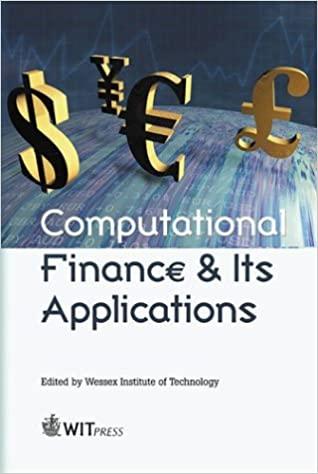Question
Four years ago the First National Bank of California installed an automated teller machine (ATM) at one of its branches. The machine had the capacity
Four years ago the First National Bank of California installed an automated teller machine (ATM) at one of its branches. The machine had the capacity to accept deposits, make withdrawals, and handle inquiries regarding account balances. Not long afterward, one of its competitors, the Last National State Bank, installed its own superior and reliable ATM and called it MoneyMax ATM. It can do everything the First National's ATM can do, and more, including transferring customers' funds between checking and savings, card retraction, receipt printing, customer service requests, dot-matrix Journal printing or electronic journal and accepting any bill payments.
Since the Last National State Bank installed its MoneyMax, First National has lost many of its customers. As a result, First National is considering purchasing a new, more efficient and productive ATM called Tranax Mini-Bank because it will handle a wide range of options to the banks customers.
When First National purchased its first ATM, it cost $500,000 and was estimated to have a useful economic life of 10 years. The bank has been depreciating its ATM on a straight -line basis (over 10 years) to an estimated book salvage value of $100,000. The current actual market value of the old ATM is $200,000.
Mr. Fast will cost $1,000,000 and have an expected economic life of 6 years. The bank plans to depreciate the new ATM over 5 years using MACRS. The bank believes that its Mr. Fast will attract new customers, which are expected to generate $300,000 in new revenues during the first year. Revenues from these new customers are expected to grow at 5% per year over the 6-year life of the new ATM. Mr. Fast Net Working Capital to service these customers are expected to be $40,000 when Tranax Mini-Bank is installed during the first year and to increase at a rate of 6% per year over the new machine's 6-year life. As an additional cost, annual maintenance costs on the new ATM will be $10,000 during the first year and to increase at a rate of 5% per year over the annual maintenance costs on the old ATM.
First National has a 40% marginal tax rate, and has the following capital structure:
Capital Structure
(in millions)
Debt $10
Preferred Stock 10
Common Stock ($5 par, 1 million shares) 5
Paid-in-capital 5
Retained Earnings 10
Total 40
The debt is based on the corporate bond that the company issued several years ago. The bond has a 10% coupon rate, a par value of $1,000 and 10 years maturity left. Today, the bond is selling for $900.
The preferred stock was issued at $25 per share and the company will pay $2.50 dividend annually.
The common stock is selling for $30 per share on the stock market and the company is expected to pay $3.0 dividend per share this year that has increased from $1.84 in the last 10 years.
Compute the net investment required to purchase the new ATM.
2.Compute the annual incremental net cash flows for each year of the project's expected 6-year life.
3.Compute the cost of capital based on market and book value.
4.Compute the net present value of this project, assuming the ATM to be of average risk.
5. Based on the calculations performed in Questions 1-3, should First National purchase the new ATM?
6.Assume that First National requires projects to have payback of less than 4 years. Under these conditions, should it purchase new ATM?
The bank's board of directors requires that a risk-adjusted discount rate be used to evaluate any investments that are seen as expanding the bank's services. Assume that the board considers the new ATM as falling into this category, since it will handle an increased number of transactions, and that the Board requires an additional risk premium to be added when evaluating the project.
The bank has estimated that the Beta of this investment to be equal 1.5 and rate of return on the market portfolio and risk-free rate are 15% and 5% respectively.
7. What is the cost of capital?
8. Should the bank purchase the bank purchase the new ATM?
Step by Step Solution
There are 3 Steps involved in it
Step: 1

Get Instant Access to Expert-Tailored Solutions
See step-by-step solutions with expert insights and AI powered tools for academic success
Step: 2

Step: 3

Ace Your Homework with AI
Get the answers you need in no time with our AI-driven, step-by-step assistance
Get Started


